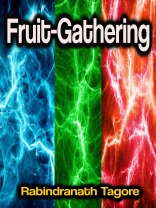Fruit-Gathering Rabindranath Tagore – Fruit-Gathering is a poem by Rabindranath Tagore, first published in 1916. Fruit Gathering is a book so rare in style and theme, yet not difficult to relate to as it is based on the relationship between God and man, the atom and the cosmos. Tagore was heavily influenced by the rich heritage of the Subcontinent and uses its fruit and flowers to symbolise the spiritual and moral values that underlie his own devotion and love for the creator. His simple poetic style finds the most evocative words and phrases, symbols and images, which have haunting music in them bringing out the deepest emotions of any reader. Fruit Gathering is the finest example of Tagores simple poetic style whose influence is still strong today with his words heard daily in the Indian and Bangladesh national anthems and studied in countless countries as they continue to capture hearts and minds.
Sobre el autor
Awarded the Nobel Prize in Literature in 1913 ‘because of his profoundly sensitive, fresh and beautiful verse, by which, with consummate skill, he has made his poetic thought, expressed in his own English words, a part of the literature of the West.’Tagore modernised Bengali art by spurning rigid classical forms and resisting linguistic strictures. His novels, stories, songs, dance-dramas, and essays spoke to topics political and personal. Gitanjali (Song Offerings), Gora (Fair-Faced), and Ghare-Baire (The Home and the World) are his best-known works, and his verse, short stories, and novels were acclaimedor pannedfor their lyricism, colloquialism, naturalism, and unnatural contemplation. His compositions were chosen by two nations as national anthems: India’s Jana Gana Mana and Bangladesh’s Amar Shonar Bangla.












